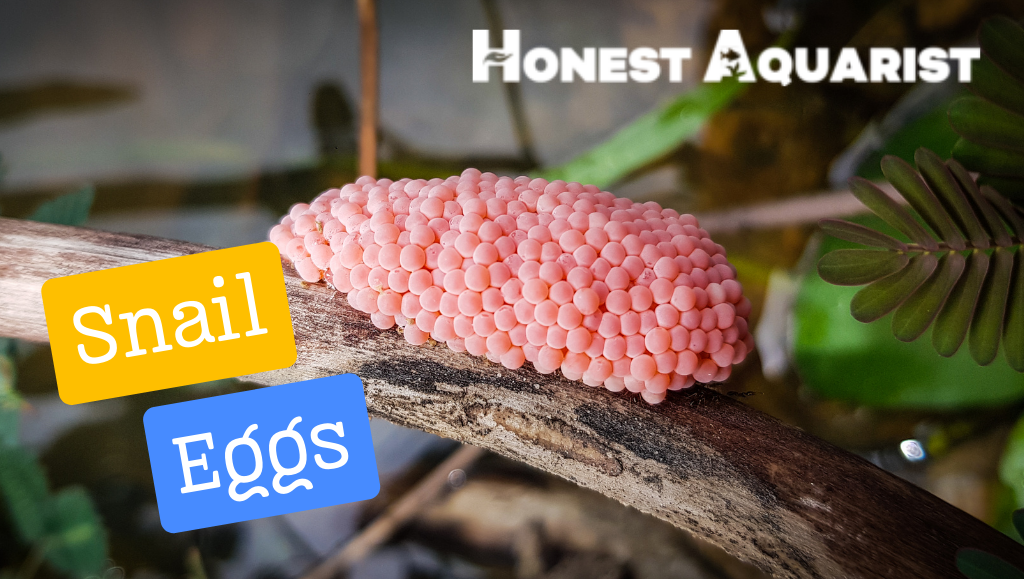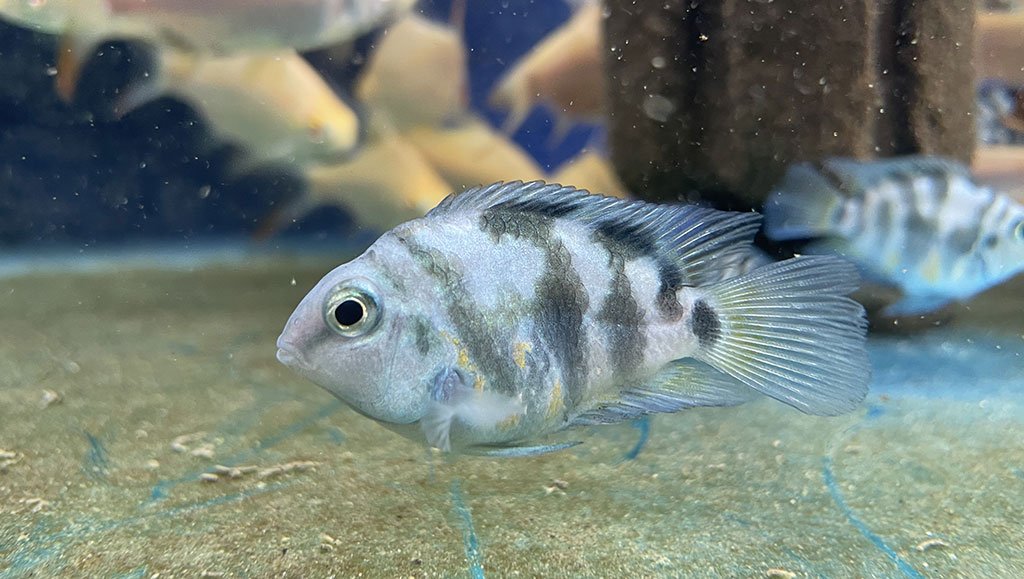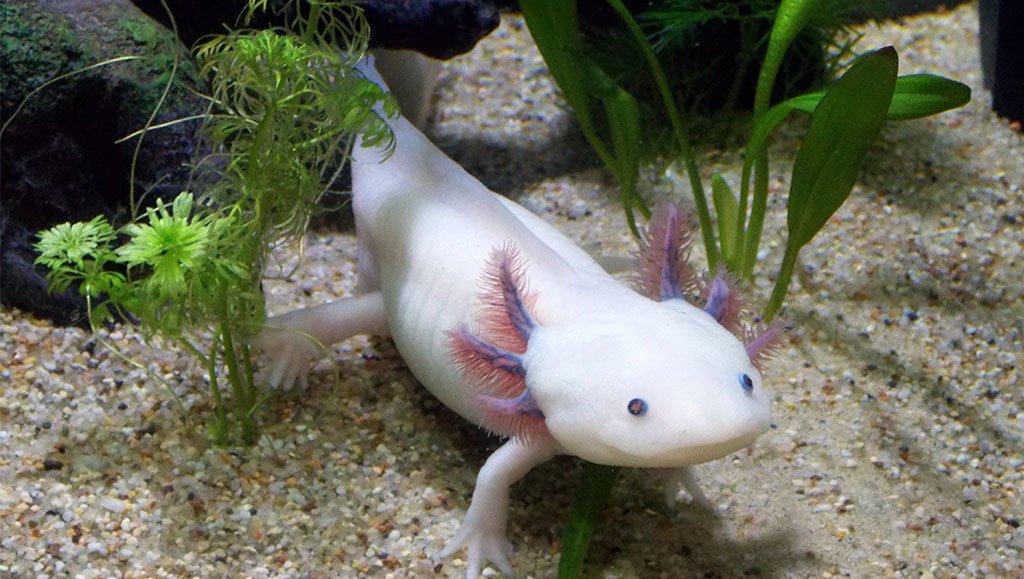Discovering snail eggs in your aquarium can be a moment filled with intrigue and a bit of uncertainty. In my years of maintaining various aquatic habitats, the appearance of these tiny, pearl-like clusters has always signalled a need for decision-making.
In this article, I will share with you detailed insights and practical advice based on my experiences. You’ll learn how to identify snail eggs in an aquarium, the importance of managing their population in your tank, and the various steps you can take to either encourage their healthy growth or control their numbers.
From natural predation methods to manual removal techniques, you will come to understand the best practices for dealing with snail eggs in your aquarium, ensuring a harmonious and healthy habitat for all your aquatic inhabitants.
Key Takeaways
- Observation is key: Regularly inspect your tank for snail eggs, particularly on plants, the glass, and any decorations. Early detection makes management much easier.
- Leverage simple solutions: Don’t overlook the power of a vinegar and water solution or the effectiveness of manual removal. Sometimes, the simplest methods are your best allies.
- Engage with the community: Never underestimate the value of collective wisdom. Online forums and local aquarist clubs can be goldmines of information and support.
- Consider snails as part of the ecosystem: Recognize that not all snails are pests. Many can contribute positively to your aquarium’s health. Understand their role before deciding on control measures.
- Experiment cautiously with DIY solutions: While copper tape and other DIY methods can offer innovative solutions, always prioritize the safety and balance of your aquatic ecosystem.
- Patience pays off: Managing snails and their eggs is rarely an overnight success. Patience, routine care, and consistent application of your chosen methods are essential for long-term balance and success.
Identifying Snail Eggs in the Aquarium
In my journey through the fascinating world of aquariums, one of the initial challenges I faced was distinguishing between different types of snail eggs. I quickly learned that understanding their characteristics, common locations, and differences between species’ eggs is crucial for effective aquarium management. Let me walk you through this process, based on my firsthand experiences.
A. Characteristics of Snail Eggs
Snail eggs, to the untrained eye, might just look like small jelly-like blobs or pearl-like clusters. However, upon closer observation, you’ll notice that they have a certain translucent quality, with the eggs of some species appearing slightly more opaque or exhibiting a color tint, often leaning towards white or light pink. Their shape also varies slightly, from spherical to slightly elongated, depending on the species. Their size can be quite surprising too, usually ranging from 1mm to 4mm in diameter, which makes them both fascinating and sometimes a challenge to spot.
B. Common Locations Where Snails Lay Eggs
Over the years, I’ve noticed patterns in where snails prefer to lay their eggs, aiding significantly in their identification and management. Many species choose hard surfaces for egg deposition, such as the aquarium glass, underneath plant leaves, or even decoration items within the tank. One peculiar observation was that some snails even lay their eggs on the tank’s filter intake or outflow, perhaps utilizing the flow of water to oxygenate the eggs better.
C. Recognizing Different Snail Species’ Egg Types
Differentiating between the egg types of various snail species is akin to mastering a subtle art. For example, Mystery snails lay their eggs above the water line, in a cocoon-like structure that hardens, offering protection. In contrast, Nerite snails also lay their eggs out of the water but in smaller, hard-to-remove capsules that adhere strongly to aquarium surfaces. Ramshorn snails, on the other hand, deposit their eggs in clear, gel-like clusters directly in the water, often on plants or decorations.
D. Monitoring Egg Development
Another aspect I’ve found crucial is monitoring the development of the eggs. The development time and the appearance of the developing snails can vary significantly. Some snail eggs might hatch within a few weeks, while others can take longer. Observing the color and size changes in the eggs can give you an indication of the hatching timeline, helping in managing your aquarium accordingly.
Risks Associated with Snail Egg Infestations
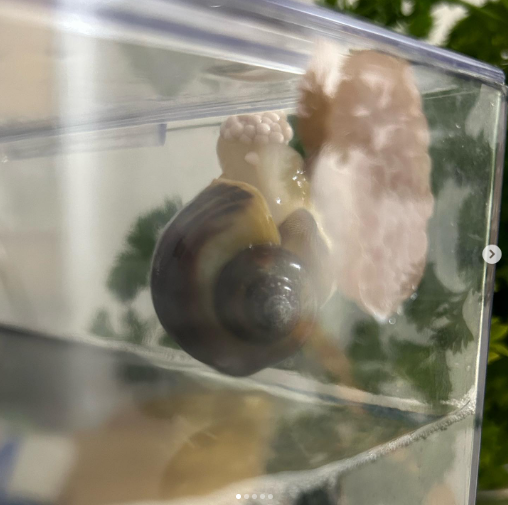
Source: @fubusuke
When managing an aquarium, monitoring and controlling the snail population becomes imperative due to the potential risks associated with snail egg infestations. From my personal experience, allowing these populations to grow unchecked can lead to several issues that may compromise the health and aesthetic of your aquatic environment. Let’s explore these risks in more detail.
A. Overpopulation and Population Explosion
One of the most immediate risks is the possibility of overpopulation leading to a population explosion. Snails reproduce rapidly, and a few unchecked snail eggs can result in a significant increase in the snail population within a short period. This explosion not only puts a strain on the aquarium’s resources but can also lead to competition for food and space, potentially starving other inhabitants. In my years of aquarium management, balancing the ecosystem has always been a priority, and controlling snail populations is a critical part of that balance.
B. Impact on Aquarium Aesthetics and Maintenance
From an aesthetic standpoint, a high number of snails can be less than desirable. Their presence in large numbers can cover the glass, decorations, and plants, detracting from the beauty of the aquarium. Furthermore, their waste contributes to the bioload of the tank, necessitating more frequent cleaning and water changes. I have spent countless hours maintaining the beauty and health of my tanks, and managing snail populations is a significant aspect of that effort.
C. Potential Negative Effects on Other Tank Inhabitants
An often-overlooked risk is the adverse effect an uncontrolled snail population can have on other tank inhabitants. Besides competing for food, some snail species can harm plants, nibbling on them incessantly. It’s essential to ensure that your chosen snail species cohabits peacefully with the rest of your aquatic life. In my practice, I have always been mindful of choosing compatible species to foster a harmonious living environment.
D. Risk of Disease Transmission
Additionally, unchecked snail populations can raise the risk of disease transmission within your tank. Snails can act as carriers for parasites and pathogens that may infect fish and other aquatic animals. Ensuring a controlled snail population assists in reducing this risk, contributing to the overall health and wellbeing of your aquarium’s inhabitants. In my experience, diligent observation and quarantine practices when introducing new snails to the tank can mitigate these risks significantly.
E. Interference with Equipment Performance
Finally, an aspect not to be underestimated is the potential for snails to interfere with the proper functioning of aquarium equipment. Snails, especially in large numbers, can clog filters, and interfere with heaters and other critical components. This can lead to malfunctions and, consequently, an unstable environment for your aquatic life. Regular maintenance and population control measures have been essential in my routine to prevent such issues.
Methods for Removing Snail Eggs from the Aquarium
In my quest to maintain the delicate balance of my aquariums, I have experimented with various methods to control or eliminate snail populations, particularly focusing on removing their eggs. I want to share these methods, which have proven effective over the years, to help fellow aquarium enthusiasts manage this common challenge.
A. Manual Removal Using Tools or Your Hands
One of the most direct approaches I’ve employed is the manual removal of snail eggs. This method requires patience and a gentle touch. Using my hands or a set of aquascaping tweezers, I carefully pick the egg clusters from the aquarium surfaces, including plants, glass, and decorations. It’s important to regularly inspect all potential hiding places for these eggs, as missing even a single cluster can lead to a population rebound.
B. Using Chemical Treatments to Dissolve or Kill Eggs
While I generally prefer to avoid chemicals in my tanks, there are situations where chemical treatments can be a necessary evil for snail egg removal. There are products on the market formulated to harm snails and their eggs without affecting other tank inhabitants. However, it’s paramount to follow the instructions meticulously and monitor the tank’s residents for any signs of distress. This method should be a last resort, used only when other methods have failed to control the population.
C. Introducing Predators or Natural Enemies of Snails
A more natural approach to controlling snail populations and their eggs involves introducing their predators into the aquarium. Species such as certain types of loaches, bettas, and assassin snails are known to feed on snail eggs and can help keep the population in check. It’s crucial, however, to ensure that these predators are compatible with the existing tank inhabitants and will not upset the ecological balance of your aquarium.
D. Employing Barrier Methods to Prevent Egg Laying
Another strategy I’ve explored is creating barriers or altering the environment to make it less appealing for snail egg laying. For example, reducing the amount of hard surfaces available for egg deposition or adjusting the water level to limit access to above-water surfaces for certain species. While not foolproof, these adjustments can help reduce the number of new eggs being laid.
E. Regular Tank Maintenance and Monitoring
Perhaps the most effective method I’ve found for managing snail populations and preventing egg infestations is thorough and regular tank maintenance. This includes frequent water changes, careful monitoring of feeding to prevent overfeeding, and regular inspection for and removal of any eggs spotted. Staying vigilant and proactive in tank maintenance is key to preventing snail egg issues before they become a significant problem.
Preventing Snail Egg Infestations in the Future
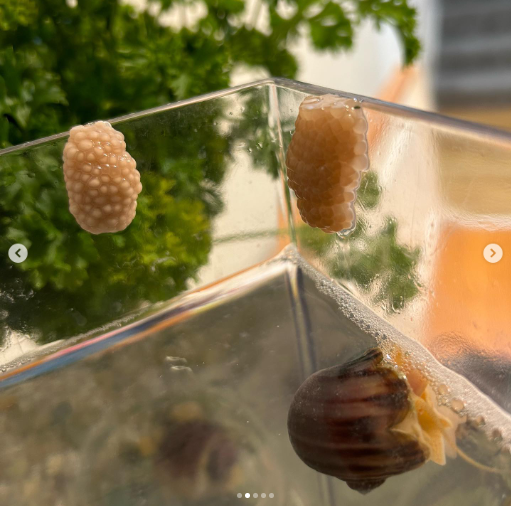
Source: @fubusuke
In my years of maintaining aquariums, preventing snail egg infestations has been as crucial as managing existing populations. Through trial and error, I’ve identified key strategies that effectively minimize the chances of unwanted snail outbreaks. Here, I share some insights that have served me well, in the hope that they assist you in your aquarium adventures.
A. Controlling Food Sources and Nutrient Levels
One fundamental lesson I’ve learned is that controlling the food source significantly reduces snail population explosions. By carefully monitoring and adjusting the amount of food provided to the tank’s inhabitants, I’ve managed to limit excess feed, which inevitably attracts snails. Additionally, keeping an eye on nutrient levels prevents the overgrowth of algae, another favorite snack for snails. It’s a delicate balance, but achieving it makes a huge difference.
B. Quarantining New Plants and Decorations
Another preventive measure I swear by is quarantining new plants and decorations before adding them to the main tank. This practice has been invaluable, as it allows me to inspect and treat these items for any hitchhiking snail eggs. A simple soak in a mild bleach solution or potassium permanganate can do wonders in eliminating these unwanted stowaways without harming your precious additions.
C. Monitoring and Maintaining Optimal Water Quality
Maintaining optimal water quality through regular testing and adjustments has proven essential in deterring snail infestations. Snails tend to thrive in less-than-ideal water conditions, so keeping the water parameters within the ideal range for your tank inhabitants can discourage their proliferation. This approach has not only helped in preventing snail problems but also in ensuring the overall health of my aquatic ecosystem.
D. Implementing a Regular Cleaning Schedule
Implementing a regular tank cleaning schedule also plays a crucial role in preventing snail egg infestations. By routinely vacuuming the substrate and cleaning the tank’s interior surfaces, I manage to remove potential snail egg deposits and reduce detritus buildup. This preventive measure, while simple, is highly effective and forms a critical component of my maintenance routine.
E. Educating Yourself on Snail Life Cycles
Finally, investing time in educating myself about the life cycles of different snail species commonly found in aquariums has been enlightening. Understanding how and where these creatures lay their eggs, their gestation period, and growth rate has equipped me with the knowledge needed to anticipate and counter potential infestations. This proactive approach has allowed me to enjoy my aquarium hobby with minimal disruptions from unwanted snail guests.
Using Snail Eggs for Breeding or Feeding Purposes
While many aquarists view snail eggs as a nuisance to be controlled or eradicated, there’s an interesting alternative perspective that considers these eggs as a valuable resource for breeding or feeding purposes. Drawing from my own experiments and experiences, I’ve discovered ways to turn what might be seen as a problem into a beneficial component of the aquarium ecosystem.
A. Setting Up a Separate Snail Breeding Tank
For those interested in breeding snails, either for aesthetic purposes or as a food source for other creatures, setting up a separate snail breeding tank is a fascinating project. I established a small, dedicated tank with the specific conditions favored by the snail species I wanted to breed. This controlled environment allowed me to monitor and manage the snail population without worrying about overpopulation in my main aquarium. Plus, it provided a surplus of snail eggs and juveniles, which I could use as needed for feeding or enhancing the genetic diversity of my snail communities.
B. Feeding Snail Eggs to Predatory Fish or Invertebrates
Another intriguing use for snail eggs involves feeding them to predatory fish or invertebrates in the aquarium. Many fish species, such as certain cichlids, loaches, and pufferfish, enjoy snail eggs as a part of their diet. I’ve found that providing snail eggs as food not only gives these predators a natural and enriching dietary option but also helps control the snail population in a sustainable manner. It’s a win-win situation where the predatory species receive a varied diet, and the snail population remains balanced.
C. Utilizing Snail Eggs as Natural Aquarium Cleaners
Surprisingly, snail eggs can also contribute to the cleanliness of the aquarium. In my breeding tank, I noticed that the unhatched eggs often became a food source for certain beneficial microorganisms and detritus feeders, which in turn contributed to the breakdown of waste and improved water quality. This indirect benefit highlighted to me the interconnectedness of the aquarium ecosystem and the value of rethinking what we consider waste.
D. Educational Opportunities
Exploring the use of snail eggs has also presented numerous educational opportunities. By observing the breeding habits, life cycle, and ecological role of snails in the aquarium, I’ve gained deeper insights into aquatic life. Sharing these findings with fellow aquarists or using them as a teachable moment for children and beginners in the hobby can inspire appreciation and wonder for the complexity of aquatic ecosystems.
E. Snail Egg Conservation for Rare Species
Lastly, my experience showed me the importance of snail egg conservation, especially for rare or endangered snail species. By carefully collecting and incubating eggs from these species, aquarists can contribute to the preservation and propagation of snails that might be facing threats in the wild. This approach not only enriches our aquariums but also offers a meaningful way to engage in conservation efforts.
DIY Solutions and Home Remedies for Dealing with Snail Eggs
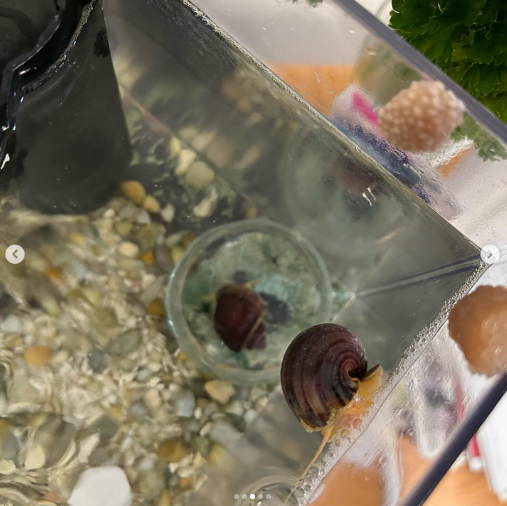
Source: @fubusuke
In my adventures through aquarium maintenance and management, I’ve discovered several do-it-yourself solutions and home remedies effective in dealing with snail eggs. While professional products are readily available, there’s a certain satisfaction in utilizing simpler, more accessible methods. Below are some of my tried-and-true techniques, alongside insights from fellow hobbyists and various forums that have become integral parts of my toolkit.
A. Vinegar and Water Solution for Egg Removal
One of my first go-to methods for removing snail eggs is a diluted vinegar and water solution. By mixing a mild concentration of vinegar with water, I create a potent but aquarium-safe solution that can dissolve snail eggs without harming the tank’s inhabitants. I usually apply this solution with a soft brush or a sponge to gently scrub the sides of the aquarium, the decorations, and even the plants where snail eggs are most commonly found. This method is effective, economical, and, most importantly, safe for the tank ecosystem.
B. Using Algae Scrubbers or Sponges to Collect Eggs
Another hands-on approach I frequently employ involves the use of algae scrubbers or sponges specifically to collect snail eggs. Snail eggs often adhere to surfaces where algae grow, making these tools particularly useful. I gently run the scrubber or sponge along the tank’s glass, plants, and decorations, carefully collecting the eggs without disturbing the balance of the aquarium. This not only helps in managing snail populations but also contributes to overall tank cleanliness.
C. Seeking Advice from Experienced Aquarists and Forums
I cannot stress enough the value of community knowledge and experience when dealing with aquarium challenges like snail eggs. Participating in online forums and seeking advice from more seasoned aquarists has provided me with a wealth of information and innovative solutions. These platforms are treasure troves of knowledge, offering diverse methods and insights that have greatly enhanced my approach to aquarium management.
D. Manual Removal as a Meditative Practice
In my quiet moments of reflection, I’ve found manual removal of snail eggs to be almost meditative. Using a pair of tweezers or my fingers, I carefully pick off snail eggs from the aquarium walls and plants. This method requires patience and a gentle touch but offers a perfect opportunity to closely inspect my aquatic environment, noting any changes or potential issues beyond just the snail population.
E. Creating Barriers with Copper Tape
Lastly, an interesting DIY solution I’ve experimented with is creating barriers using copper tape. Snails, and by extension their eggs, are deterred by copper. By placing copper tape around the rim of the aquarium or on surfaces prone to egg-laying, I’ve managed to discourage snails from these areas. It’s a non-invasive, chemical-free method that, when used cautiously to prevent copper exposure to the water, can be quite effective.
My Opinion on Managing Snail Eggs in an Aquarium
In my years of maintaining aquariums, dealing with snail eggs has become a task filled with learning and a bit of creativity. From my experience, the most effective approach combines preventative measures, manual removal, and utilizing these eggs as a resource rather than viewing them as mere nuisances. My advice to fellow aquarists is to first understand the role that snails and their eggs play in your aquarium’s ecosystem. Not all snails are harmful, and in many cases, they can contribute to the health of your aquatic environment.
Preventative measures, such as carefully selecting plants and decorations before introducing them to your tank, can significantly reduce snail outbreaks. However, once you have snail eggs, consider natural methods for control and removal, with a focus on preserving the balance of your aquarium. The use of vinegar solutions and manual removal with tools like tweezers or algae scrubbers can be very effective when done carefully and consistently.
But beyond control and removal, I’ve found real value in reimagining the role of snail eggs. Whether it be as food for other tank inhabitants, as part of the ecosystem’s cleanup crew, or even as a conservation effort for rare species, these practices have enriched my aquarium experience. Sharing this knowledge with the community, both online and in-person, has opened up dialogues and has been instrumental in honing my approach to aquarium management.
From my perspective, patience, observation, and a willingness to experiment with methods like those mentioned have been key to my success. Engaging with the community for tips and tricks, and incorporating a bit of DIY spirit, can transform the challenge of managing snail eggs into an opportunity for growth—both for you and your aquatic family. Remember, every aquarium is a unique, living system, and what works for one may not work for all. Yet, it’s through these shared experiences that we as aquarists can thrive.
